August 11 marked a historic day for kʷikʷəƛ̓əm (the Kwikwetlem First Nation).
For the first time in over 100 years, they raised and dedicated a house post that tells the stories of their ancestors on their primary land. Formerly called Riverview, it is now called səmiq̓ʷəʔelə, or the Place of the Great Blue Heron.
The post, aptly named səmiq̓ʷəʔelə kʷθə šxʷhəliʔ, or Spirit of the Great Blue Heron, represents a warrior carved from a 600-year-old cedar from the Coquitlam watershed. It will rest just outside the Red Fish Healing Centre for Mental Health and Addiction, or θəqiʔ ɫəwʔənəq leləm', both welcoming and watching over the clients who come to heal.
"This is a symbol of power. We wanted to reiterate that power and show the warrior protecting the land.”
Brandon Gabriel, the Kwantlen First Nation carver that the kʷikʷəƛ̓əm commissioned to carve the post, told a story of how the tree was selected at the dedication ceremony the morning of August 11, while the sun shone brightly, celebrating.
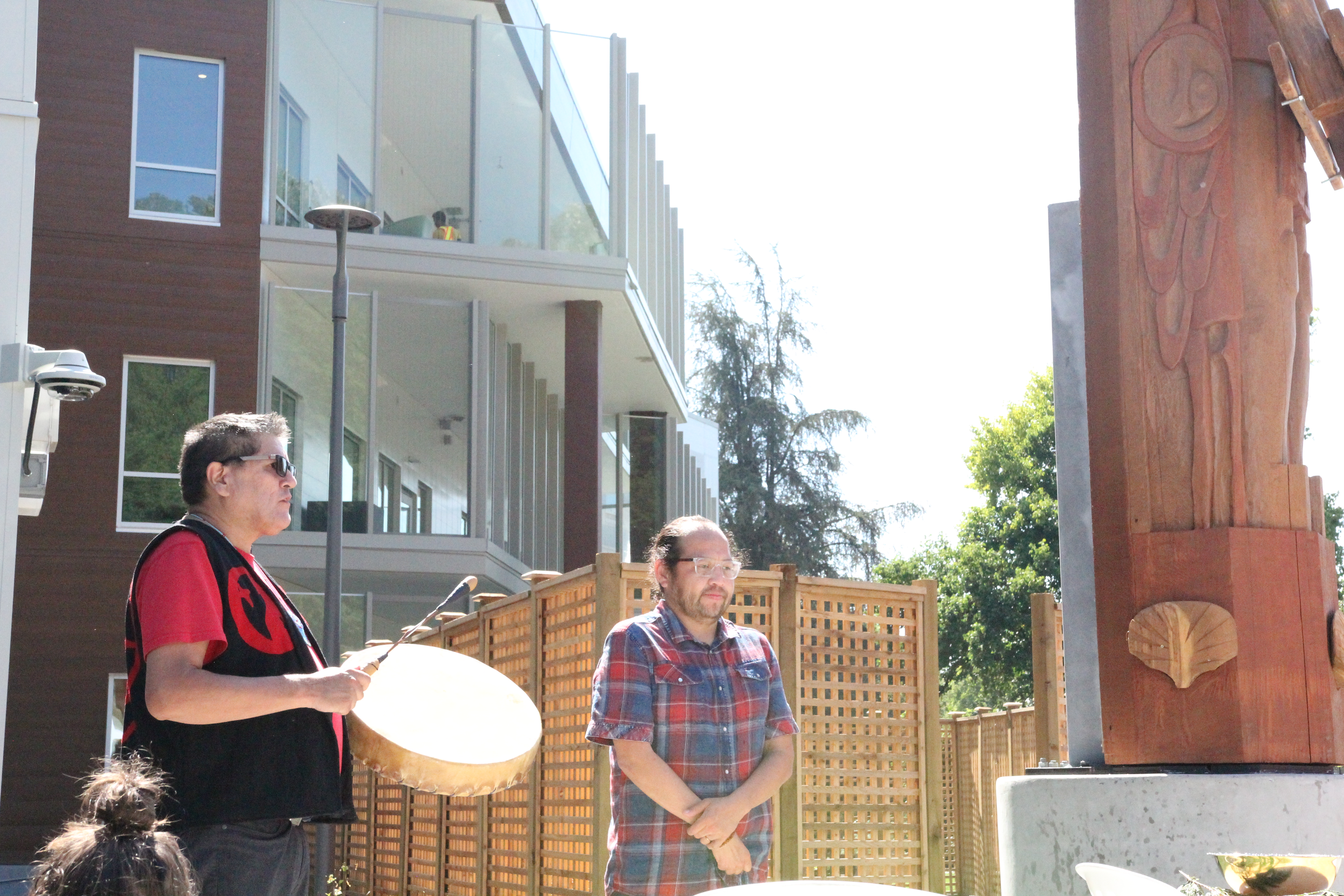
Stephen Armstrong (left), member of the Kwikwetlem First Nation, with Kwantlen First Nation artist Brandon Gabriel.
“When we went up to the mountain to select the tree, they found one that broke into seven pieces when it fell,” he said. “This is just one of those pieces. There is an arc of time here that goes back thousands of years. It withstood all those winter storms and the removal of the people from the land. This is a symbol of power. We wanted to reiterate that power and show the warrior protecting the land.”
Every etching on the Spirit of the Great Blue Heron tells a significant part of its story.
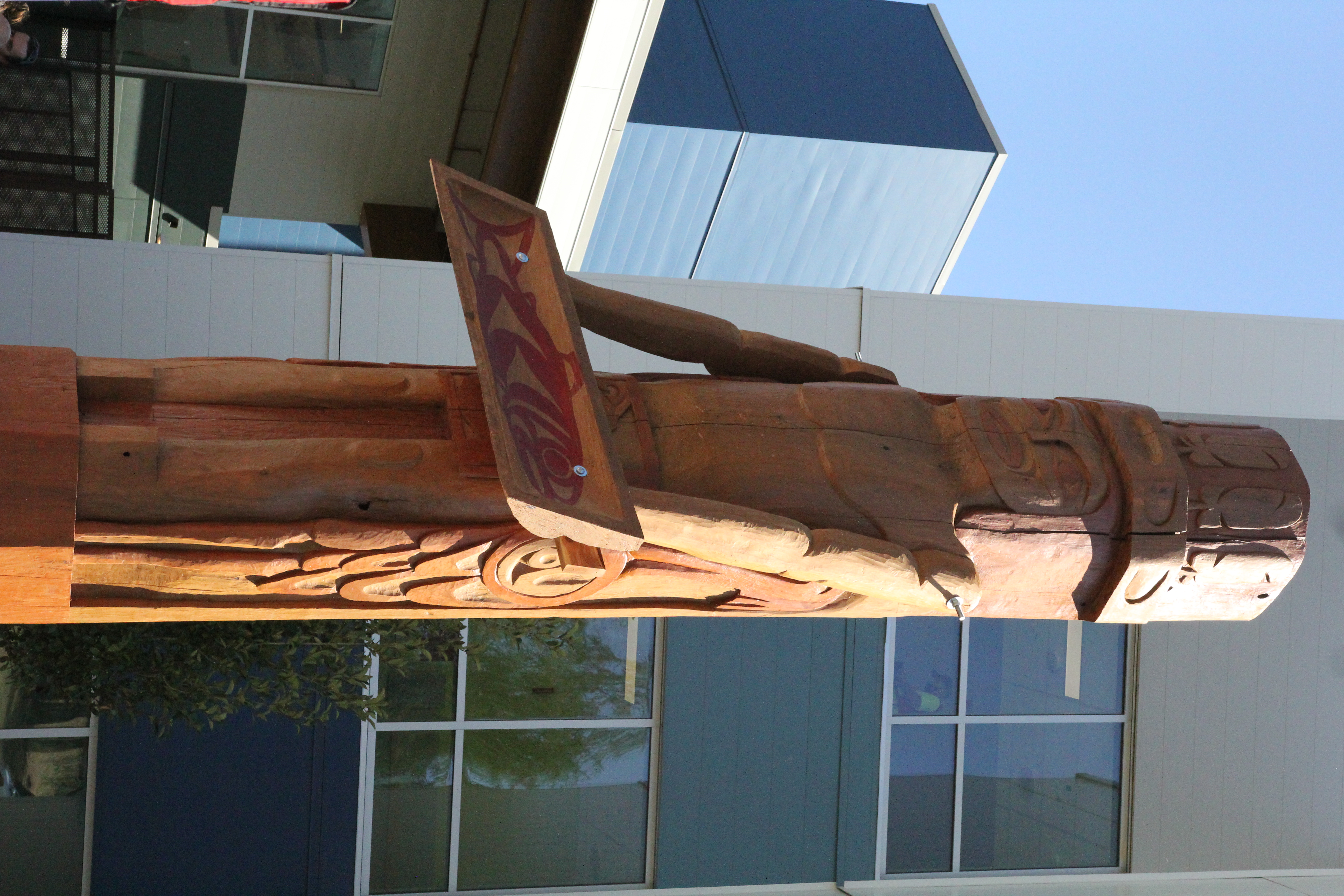
The male figure depicts a warrior who protects the land, its people and its waters. The wolf tunic featuring the clan crest denotes kinship between the Kwantlen First Nation and kʷikʷəƛ̓əm, while the feathers in the warrior’s bonnet represent kʷikʷəƛ̓əm families. Sea shells represent kʷikʷəƛ̓əm’s occupation, land usage and assertion of the territory. The blue heron represents night-protecting spirits that guided ancestors while they travelled. Finally, the feast bowl adorned with salmon has been painted with tumeth, a sacred paint that provides perpetual nourishment.
“When it rains, it will accumulate in the bowl and feed into the earth and feed the land—healing it,” said Gabriel. “The healing powers of the pigment will go back into the earth again. It is like a cycle.”
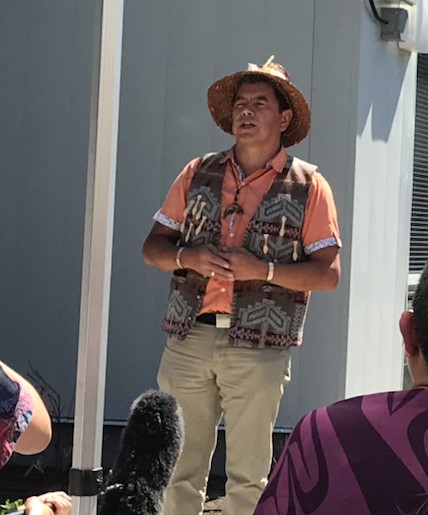
A number of kʷikʷəƛ̓əm Elders and leaders, including Chief Ed Hall, spoke at the dedication ceremony about what the land, the Spirit of the Great Blue Heron, and the opening of the Red Fish Healing Centre mean to them.
“I carry a legacy,” said Chief Hall. “Watching a 600-year-old cedar come down from the mountain and become this is something to behold. It’s in my heart.”
Councillor George Chaffee described the house post raising and dedication ceremony as a homecoming for his people.
“People will talk about the day that kʷikʷəƛ̓əm made their voice heard,” he said. “This is the beginning of that. We have a message for everyone today: We are home. This is what we do to show you that this is who we are. The people who are with us now are not dictating. They are listening. We walk together now.”
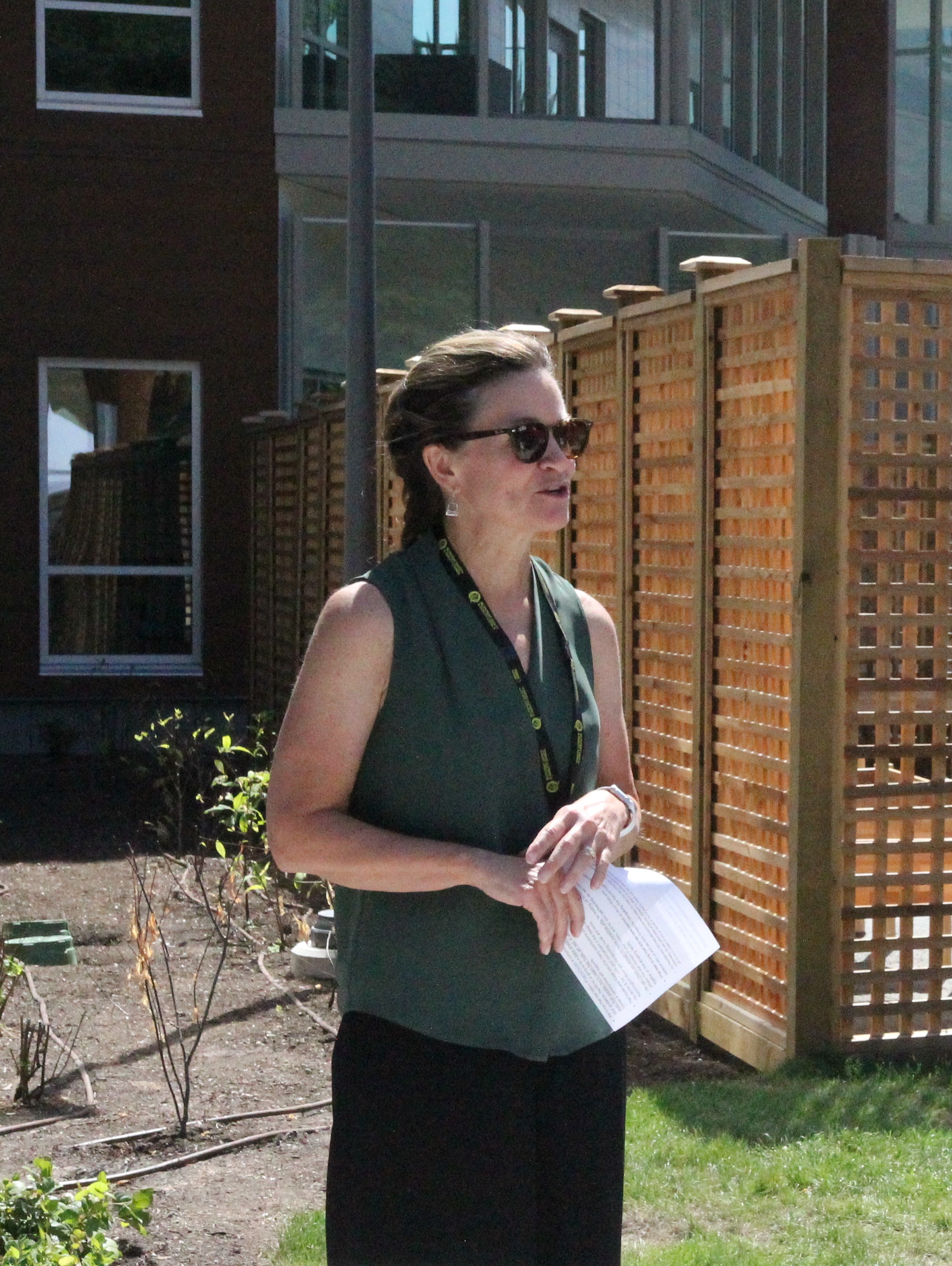 Lynn Pelletier, the VP of BC Mental Health and Substance Use Services, which operates the Red Fish Healing Centre, also shared a message of thanks at the ceremony.
Lynn Pelletier, the VP of BC Mental Health and Substance Use Services, which operates the Red Fish Healing Centre, also shared a message of thanks at the ceremony.
“When the Red Fish Healing Centre was still in the planning stages, I hoped we would be able to honour your rich history here by displaying pieces of artwork that tell the story of the kʷikʷəƛ̓əm,” she said. “I never imagined that might include a house post like this—it is a powerful testament to strength, resilience, and transformation, and the healing that will happen here. I know our clients will find it comforting and meaningful.”
"We have a message for everyone today: We are home. This is what we do to show you that this is who we are. The people who are with us now are not dictating. They are listening. We walk together now.”
In addition to the Spirit of the Great Blue Heron, kʷikʷəƛ̓əm has also gifted the Red Fish Healing Centre with a number of pieces of artwork, including an Indigenous mural on the wall of the Hummingbird Room, a space where spiritual healing activities such as smudging will take place.
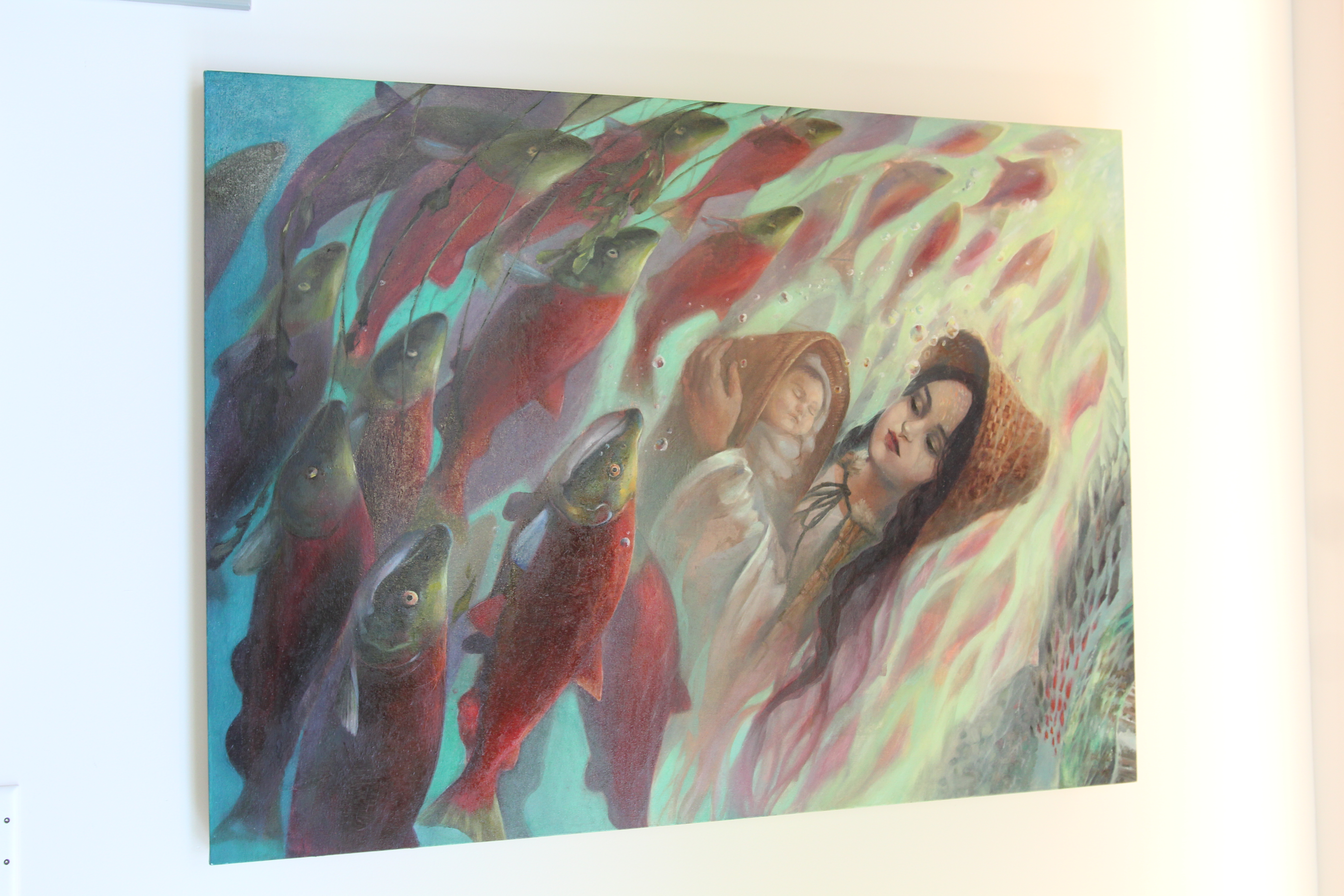 They also contributed to design and decor throughout the facility, the landscaping of the grounds, and therapeutic programming to help ensure care at Red Fish will be culturally humble and safe. The hən̓q̓əmin̓əm̓ language is also used throughout: kʷikʷəƛ̓əm named the units, as well as the Red Fish Healing Centre itself—red fish refers to the salmon that run through the Coquitlam River, and that have endured and nourished kʷikʷəƛ̓əm for thousands of years, even when colonizers threatened the salmon’s existence.
They also contributed to design and decor throughout the facility, the landscaping of the grounds, and therapeutic programming to help ensure care at Red Fish will be culturally humble and safe. The hən̓q̓əmin̓əm̓ language is also used throughout: kʷikʷəƛ̓əm named the units, as well as the Red Fish Healing Centre itself—red fish refers to the salmon that run through the Coquitlam River, and that have endured and nourished kʷikʷəƛ̓əm for thousands of years, even when colonizers threatened the salmon’s existence.
“We know that the history of səmiq̓ʷəʔelə is complicated,” said Pelletier. “But today, thanks in part to your guidance, the Red Fish Healing Centre is going to be a place where people come to regain their hope, get well, and ultimately go back home to the people who love them. We thank you for your wisdom and collaboration in designing a space that would be safe and a testament to your history. We also thank you for your patience with us as we learn.”
